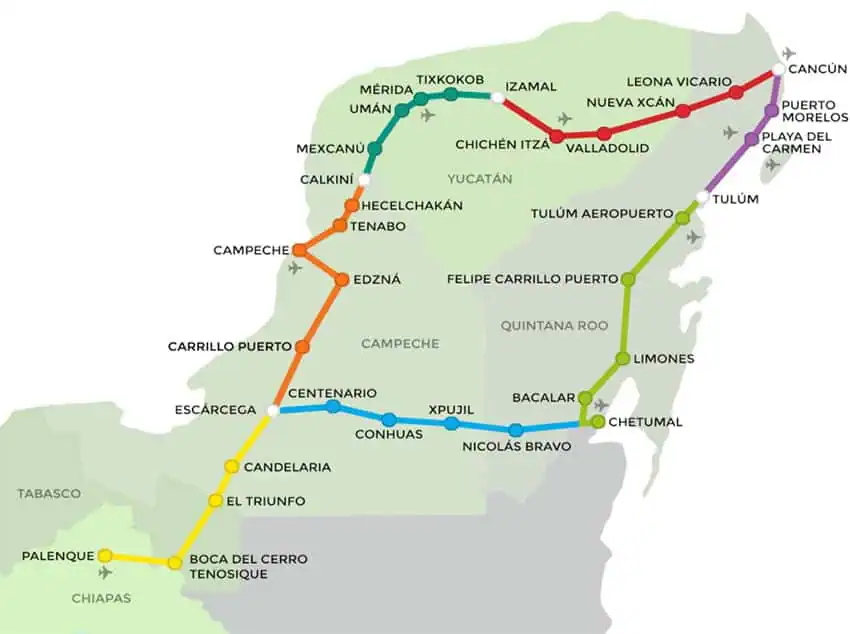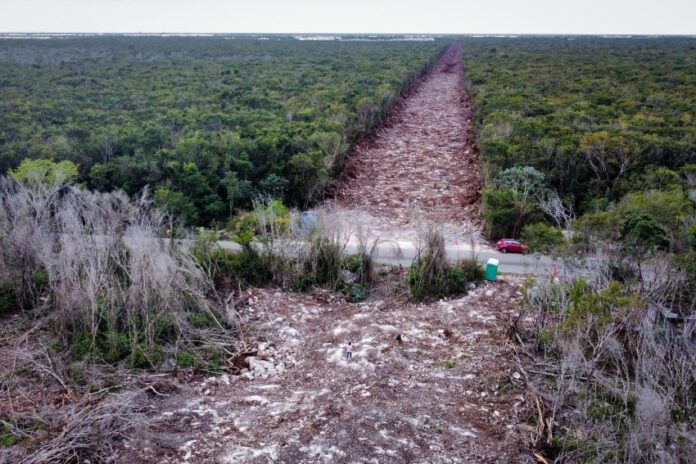Conceding that construction of the Maya Train caused environmental harm, Mexico’s Environment Ministry (Semarnat) announced a restoration plan for the damaged ecosystem.
Environment Minister Alicia Bárcena on Wednesday said the government is preparing a plan to address the ecological damage and will seek to solicit input from local communities.
Tuvimos un fructífero diálogo entre titulares del sector ambiental y periodistas de diferentes medios sobre la Política Ecológica y Ambiental Humanista de la presidenta @Claudiashein. ¡Gracias por su interés! Su labor es esencial para informar las acciones que impulsamos.
🇲🇽🤝🍃 pic.twitter.com/tLlOuCn3DD— Alicia Bárcena (@aliciabarcena) April 1, 2025
The Maya Train stretches 1,554 kilometers (966 miles), connecting cities and rural areas of the Yucatán Peninsula. The US $30-billion mega-project was a major focus of former President Andrés Manuel López Obrador’s administration. Construction began in June 2020 and partial operations began in December 2023.
Bárcena outlined some of the issues that the restoration plan would aim to rectify, including problems related to native fauna.
She said that some of the mesh netting placed along tracks would be removed so as to allow the free movement of local wildlife such as jaguars, tapirs and deer. Wildlife crossings should also be improved, she said.
“The restoration required … must be comprehensive because it must involve reforestation,” Bárcena said. “Local communities can be a significant factor in helping restore the jungle ecosystem.”
Greenpeace México called the government’s remedial actions “positive,” while asking in a social media post if the actions proposed would be enough.
In a published statement, Greenpeace México insisted that it is critical for Semarnat to seek public involvement and consult with experts.
The environmental organization did offer praise for Semarnat’s announcement that it is considering designating the region’s aquifer, which includes underground caves and cenotes, a biosphere reserve. Cenotes, which are common in the Yucatán Peninsula, are natural pits or sinkholes formed by the collapse of limestone bedrock, thus exposing groundwater.
“The aquifer is one of the principal water sources in the region,” Greenpeace said in a statement. “It connects diverse ecosystems and contains archaeological and paleontological items of incalculable value.”
The global environmental organization also said simply removing mesh netting and improving wildlife crossings is not enough. “Concrete measures must be implemented to guarantee reproduction and survival of threatened species such as the jaguar,” it said, adding that biological corridors that have been obstructed must be restored.

It also wondered whether reforestation efforts could possibly be sufficient considering that approximately 10 million trees were toppled. When proposing the Maya Train project, López Obrador had declared that “not a single tree would be cut down.”
As part of the government’s reforestation project, the National Forestry Commission (Conafor) will also seek to restore damaged mangroves.
A Conafor official said the reforestation project would be funded by the construction companies involved in building the Maya Train, but no details were presented to reporters. The government did not provide a cost estimate nor did it explain when the restoration work might begin.
Environmental and community activists battled Maya Train project
Since the inception of the project, environmental and Indigenous activists voiced objections to the train’s construction.
Environmental activists decried the massive destruction of the peninsula’s jungle and the government’s apparent failure to carry out environmental impact studies. They also argued that the steel and cement pilings being used had pierced through the roofs of underground limestone caves, destroying the archaeological and geological heritage of the region.
Indigenous activists complained that local communities — mostly populated by Indigenous Maya — were not properly consulted, even those that were forced to relocate. Others wondered if the local Indigenous culture would be destroyed.

Opponents frequently won temporary injunctions against the project, but the government either ignored the rulings or managed to overturn the decisions on appeal.
Earlier this year, a decision by a federal court halted the construction of two of the seven sections of train lines — Lines 5 and 7 — but critics said the ruling came too late as the tracks were virtually completed and the damage to surrounding ecosystems was already done.
The Sélvame del Tren activist collective — a constant thorn in the government’s side — said it was grateful that the government finally acknowledged the environmental damage, but said it will continue to speak out if restoration efforts come up short.
With reports from Animal Político and El País
